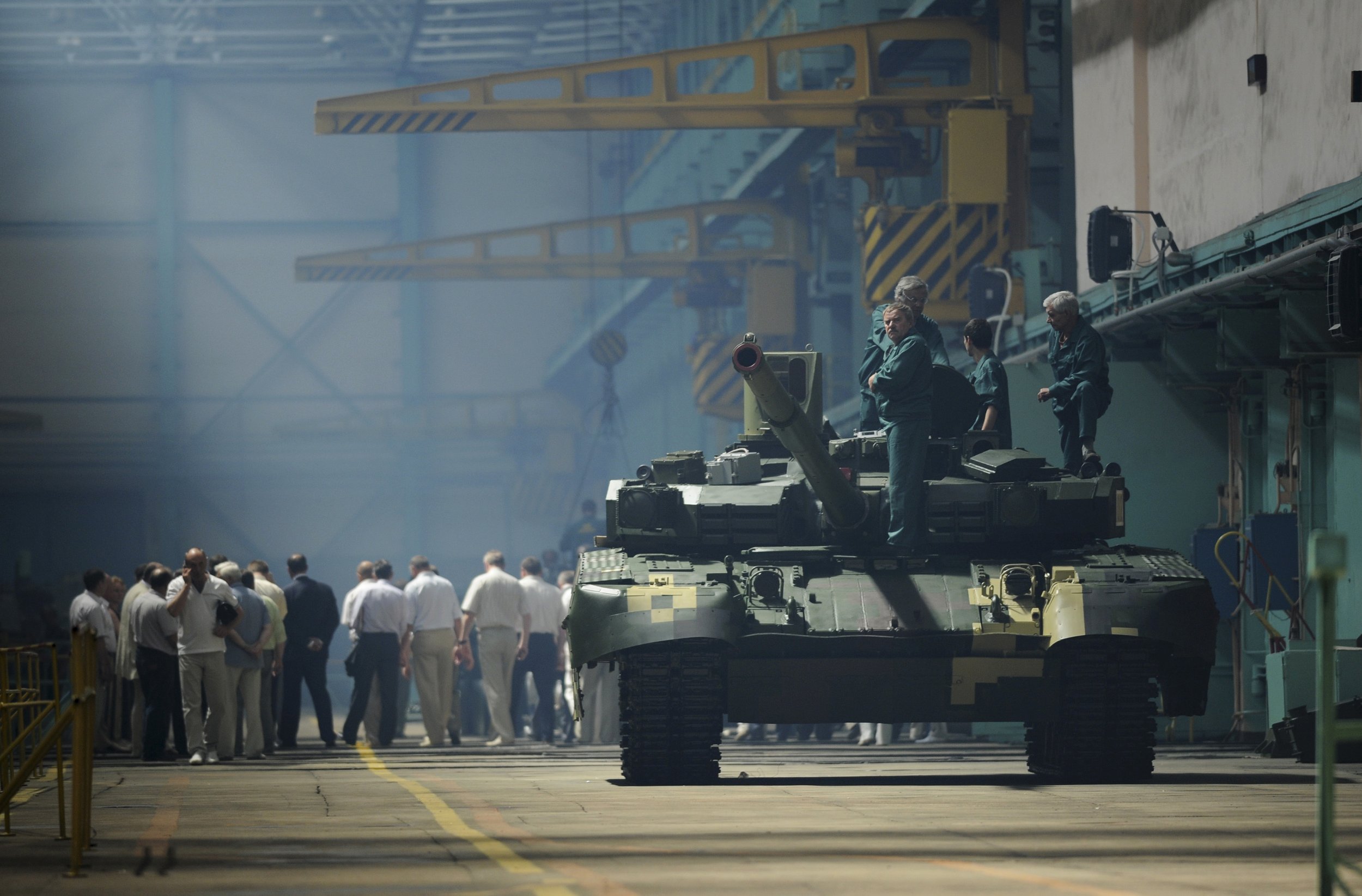
Ukrainian tanks once boasted the reputation of "super tanks" during the Cold War. When Russian-backed rebels triggered an insurgency in the country's east in 2014, Russian tanks tumbled across the Donetsk basin to defend separatist positions, with the conflict now at a standstill.
When Kiev announced it would revive the same spirit of industry that bred its Soviet-era tank manufacture, boosting production for a new tank vehicle by an unprecedented 2,300 percent in 2016, this should have been a sign for worry on the other side of the front line. The Ukrainian-made Oplot tank, built with a Western-style turret and apparently a crack shot against ground and low-flying air targets, has wowed tank experts. Of the new breed in production, 40 will be going to Thailand's army.
But closer to home, the Oplot may prove too expensive for Ukraine's own military, Ukrainian independent news channel Hromadske reported on Friday. Per a vaulation made by Ukroboronprom, Kiev's state-owned arms-making conglomerate, a single Oplot costs $4.7 million. Kiev first ordered 10 Oplot tanks for its troops before crunching the numbers and realizing the state budget was spread too thin for the pricey purchase.
Even as war flared on the territory and with tank production surging, the kit had gone for export abroad until earlier this month. Visiting the Kharkiv factory that birthed the Oplot, Ukraine's Defense Minister Stepan Poltorak praised the tank, calling it a "modern combat machine that is now being exported to many countries across the world but is absent from the arsenal of Ukraine's armed forces."
Ukraine's National Defense and Security Council has said that as of next year work will begin on an order of 10 Oplots for Ukraine's troops, though there is no exact deadline for full delivery.
This would soon change, Poltorak promised, announcing that Ukraine was ready to commission Oplot tanks for its own troops and, crucially, send them on duty in the war-ravaged Donbas. The 50-ton machine is slightly bigger that Russia's top-shelf tank in service, the T-90, but the two have many specs in common. Considering Russia has not sent it its own new-generation tank into the Donbas regions, the Oplot would be in a class of its own were it to barrel toward the east. The three-crew behemoth can reach speeds of up to 28 mph off road and 44 mph on roads—a step swifter than the T-90, and matching its eight-rounds-per-minute fire rate.
As recently as August, Poltorak said the choice between renovating Soviet-era tanks or buying an Oplot when war erupted in the east was made in urgency.
"We were acting simply out of necessity," Poltorak told state news agency Ukrinform at the time. "For the price of one tank, we could renovate 10."
The renovation in question refers largely to upscaling Soviet-era T-64 tanks, older than the parent tank of both the Oplot and Russia's T-90—the T-80—into T-64BM 'Bulat.' Media reports from the front lines have disputed the availability of even these upscaled tanks, as some troops claim they are simply operating the 40-year-old original machines. The story is similar to other new Ukrainian kits such as the Dozor armored trucks, of which none were sent to the front line, according to a report by Radio Free Europe last month, as some soldiers opted to mend their Soviet vehicles by welding loose change into bullet holes.
Experts are skeptical over whether the government should rush to bring in the multimillion-dollar Oplots on the front line due to the nature of the conflict.
"There is no need to invest a lot of time and money in Oplots," Michael Kofman, a military expert at the Wilson Center, told Hromadske. "Even if Ukraine had them, the situation on the ground would not change significantly. In the worst-case scenario—that is, full-scale hostilities with Russia and the full use of its conventional weapons—Russia could simply crush the Ukrainian tanks because of its significant numerical advantage alone. In your situation, it's better to have a lot of basic tanks rather than a few very expensive ones."
Uncommon Knowledge
Newsweek is committed to challenging conventional wisdom and finding connections in the search for common ground.
Newsweek is committed to challenging conventional wisdom and finding connections in the search for common ground.
About the writer
I am a Staff Writer for Newsweek's international desk. I report on current events in Russia, the former Soviet Union ... Read more
To read how Newsweek uses AI as a newsroom tool, Click here.








